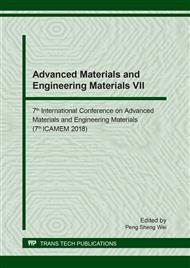p.311
p.316
p.322
p.327
p.333
p.339
p.344
p.350
p.356
Laser Micromachining of Titanium Alloy in Water with Different Temperatures
Abstract:
Underwater laser machining process has been employed as an alternative process to ablate materials with minimum thermal damage. Though many studies provide comprehensive investigations to enable the understanding of laser-water-material interactions during the laser ablation process in water, the effect of water temperature on the ablation performance has not been revealed yet. To cope with this challenge, this paper presents the roles of water temperature on cut dimensions in the underwater laser micromachining of titanium alloy (Ti-6Al-4V). The effects of laser power, traverse speed and number of laser passes were also examined in this study, where groove width and depth were measured and analyzed. The experimental results showed that a deep cut can be produced by using slow traverse speed with multiple-pass technique. However, using too high laser power can cause a shallow cut due to the large formation of recast in the laser-ablated area. According to the findings of this study, the laser energy density of about 750 J/mm2 can provide the deepest cut among the other conditions examined in this study.
Info:
Periodical:
Pages:
333-338
Citation:
Online since:
August 2018
Authors:
Keywords:
Price:
Сopyright:
© 2018 Trans Tech Publications Ltd. All Rights Reserved
Share:
Citation:


